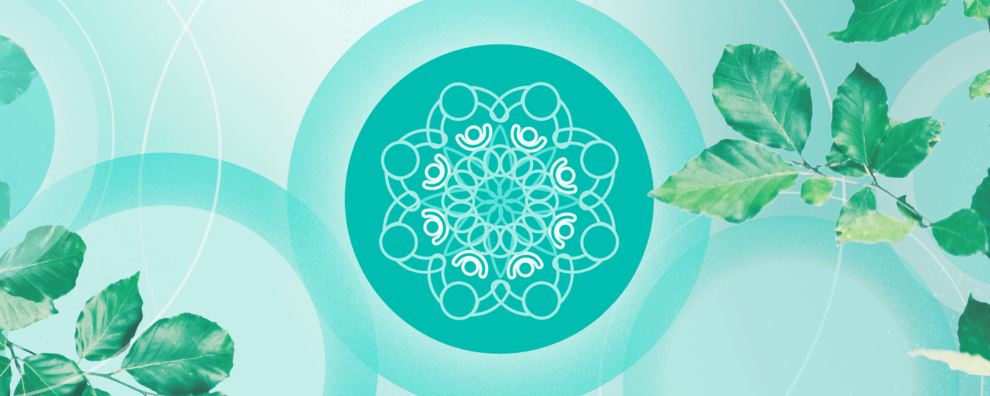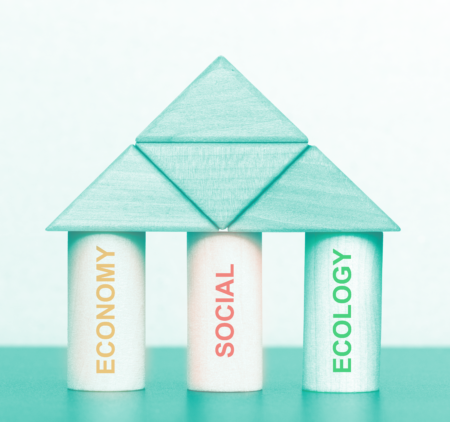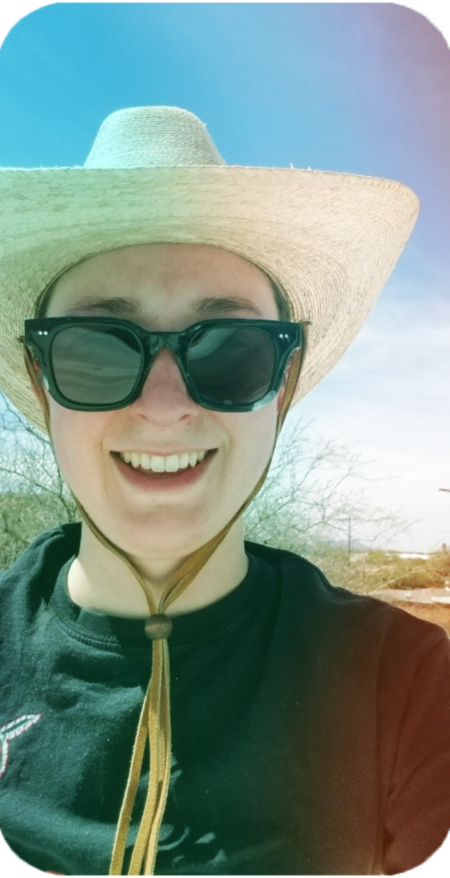
This Earth Day rather than talk about the new shampoo and conditioner I use to save sea creatures from plastic waste or the bucket I keep in my shower to capture water for my plants, I want to talk about an equally important action we can all take to create a more resilient and sustainable world: centering community and civic engagement. After all, why are we all hustling to fight climate change if it’s not about caring for our communities?
If you are reading this blog, you are likely familiar with the three pillars of sustainability: environment, economic, and social. The three pillars are a framework for sustainable development, achievable when environmental protection, economic profitability, and social equity coexist without one pillar taking over any of the others. But what happens when the pillars are not balanced?

In the U.S., the economic pillar is often prioritized and appears as the tallest of the three, as we tend to focus on inventing technologies to improve sustainable development. This is evident in the growing list of headlines and newspapers discussing the next big tech idea that (if successful) could solve some incredible problems — of course, with a bunch of disclaimers at the end. I find it a bit ironic that we focus so much on technology and innovation to solve our current climate situation when we can trace humans’ catastrophic impact on our world to the rapid industrialization and innovation that began in the late 19th century. I’m not suggesting we should stop making technological innovations—I love my indoor plumbing, hot water, mini-splits, and shampoo bars. I am stating that we need to ensure our “social pillar” doesn’t look like a stump next to the economic and environmental pillars.
This is something I appreciate about ILLUME; my colleagues and I research the strange, and often “irrational” behaviors of humans interacting with technology. We evaluate what they are doing and what they need, and then develop recommendations from our findings, rather than designing a widget to solve their problems and figuring out later how it will integrate with reality. To me, this approach feels uncommon. For example, personal automobiles were rolled out under the guise of convenience and personal liberty, but there was a lack of foresight about how this technology would dominate and harm our environments (built and natural). Now we are grappling with all of the unintended consequences of automobiles, most of which will not be solved by electrification alone.
Before personal vehicles, communities were designed for humans, not cars. This enabled neighborhood hubs to thrive because they were operated by community members and their services were tailored to the specific needs of that group. When resiliency, municipal connections, and customized services are baked into a community-centered model, people don’t have to spend time driving to a generic mega store or spend hours getting to work/school because their basic needs are met locally. Bopping around in your neighborhood also allows more community connections, so in times of need, folks can turn to each other for support. As we consider the three pillars of sustainability, it’s important to understand the needs of the people and design for that, and before deploying that new widget or technology consider the potential ripple effect and long-term impacts it might have.

For the past few years, I’ve prioritized the social pillar in my sustainability actions through my civic engagement. During the pandemic, I decided to get more involved and participate in building community within my Tucson neighborhood. I started by joining my neighborhood listserv and subscribing to the City’s and Ward’s newsletters. This listserv led me to participate in my community in new ways, ranging from housing discussions to redistricting to regional transportation planning. I became the Treasurer of my neighborhood association and an active content contributor to the listserv by trying to provide fact-based takes on local issues.
One issue that I’m most proud of was our neighborhood banding together to halt the encroachment of a private organization on public space. The organization wanted to fence in part of the neighborhood park to ‘expand their services for the community.’ The neighborhood called it what it was—privatization and monetization of public space. While we lost the initial challenge, we won in the end once the Mayor and Council heard the neighborhood’s concerns.
Through my neighborhood advocacy, I developed a friendship with my neighbor Mary, an Occupy Tucson leader, and custodian at the Global Justice Center. Mary is a mentor to me, and I value how she prioritizes love, care, and community through her civic engagement. She strives to create welcoming spaces with the hope that no one feels they have to be alone. Mary is also how I found myself on the roof of the Global Justice Center figuring out how to reseal the roof before summer. This is the most rewarding type of work to me because the benefits are visible, and directly help my community.

I am passionate about the work I am doing for my community and envision a Tucson where communities are centered and prioritized in our sustainability pillars. While it isn’t always easy, it’s been an overall net positive experience for me to spend my time helping shape my community’s future and finding unexpected friendships and mentors along the way. I hope my story inspires you to get involved and prioritize the social sustainability pillar on Earth Day and every day of the year.
